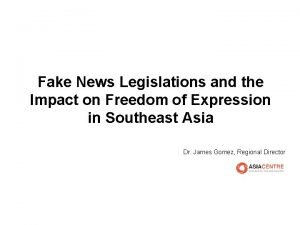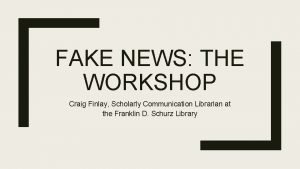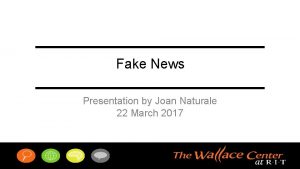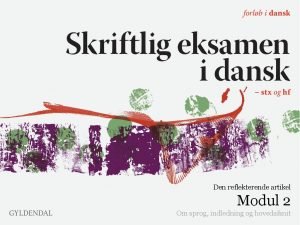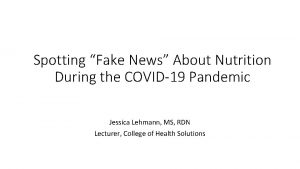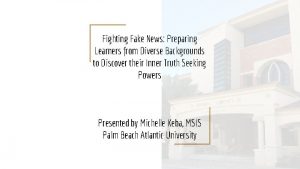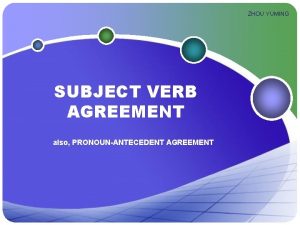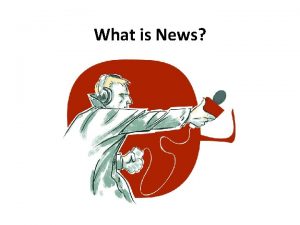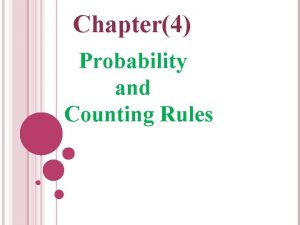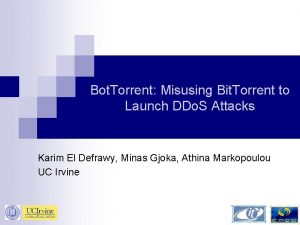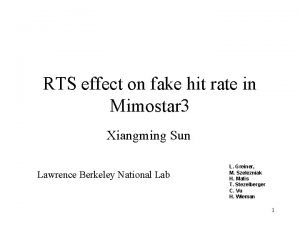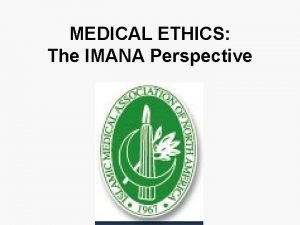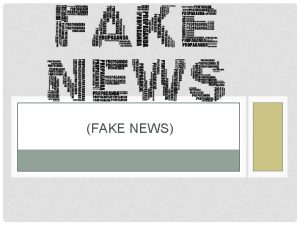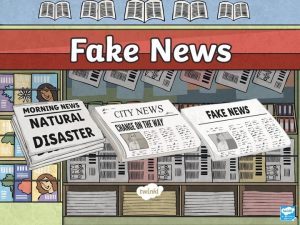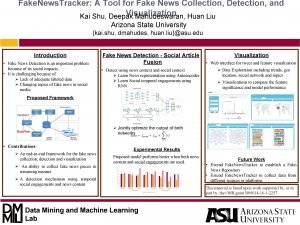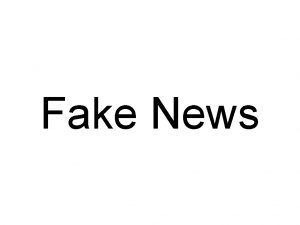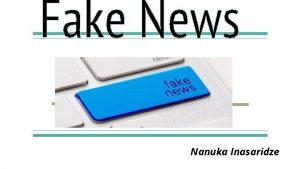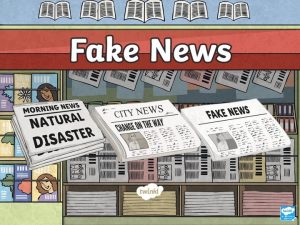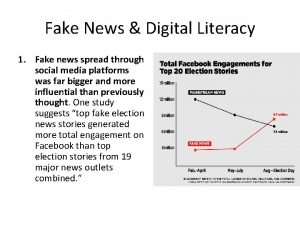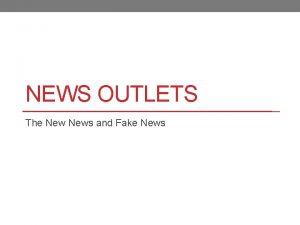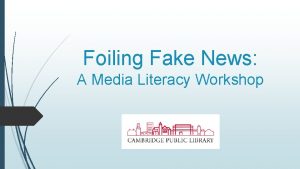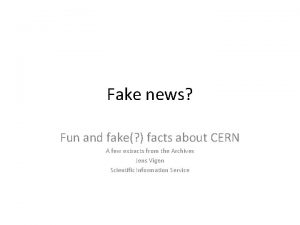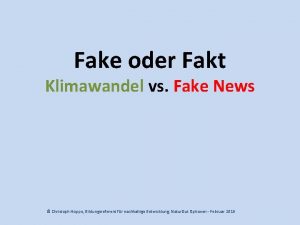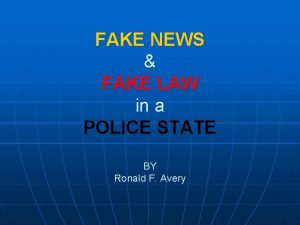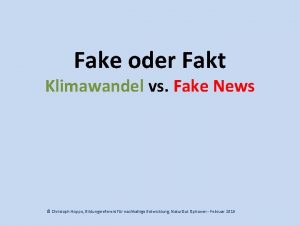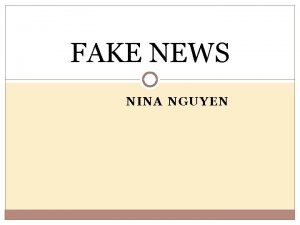POLITICAL ASYMMETRIES IN FAKE NEWS ACCEPTANCE Dr Craig




















- Slides: 20

POLITICAL (A)SYMMETRIES IN ‘FAKE NEWS’ ACCEPTANCE Dr. Craig Harper and Prof. Thom Baguley craig. harper@ntu. ac. uk @Craig. Harper 19 / @seriousstats Paper presented at the 2018 BPS Annual Conference (Nottingham, UK)


What is ‘fake news’?

How big a problem is ‘fake news’? • Guess et al. (2018) • 27. 4% of Americans visited at least one fake news website in the month before the 2016 Presidential election • Fake stories made up 3% of all media consumption • 60% of this access was by a small group with ultra-conservative online media diets • Fake news made up a significantly higher proportion of Trump voters’ engagement with the news (6. 1%) than Clinton voters’ (0. 8%) • Both Trump and Clinton voters were more likely to visit a fake news story if it was framed as being consistent with their political leaning

Why do we fall prey to ‘fake news’? • The stories look real! abcnews. com. co • buzzfeedusa. com • morningnewsusa. com • • Psychological factors • • Faith in intuition (Pennycook & Rand, 2017) Motivated cognition Confirmation bias • Desire for “tantalizing” and emotionally-charged stories (Chandra, 2017) •

Research questions 1. Do political liberals and conservatives believe fake news to the same or a different extent when it is consistent with their ideological position? 2. Do political liberals and conservatives disbelieve real news to the same or a different extent when it is inconsistent with their ideological position? 3. Are these effects moderated by any psychological constructs? Collective narcissism • Need for cognition • Faith in intuition •

General research design • Crowdsourced recruitment of large samples of political partisans • • Random assignment to politically-consistent or -inconsistent stories within each group • • Approximately 50: 50 splits within each group Participants provide attention check information and story legitimacy judgements This story is true • This story is reliable • I do not trust this story (reversed) • This news outlet is probably biased (reversed) • I believe this news story • The story is fake news (reversed) •

RQ 1: Belief in fake news • 376 liberals, 346 conservatives (Americans recruited via MTurk)

RQ 1: Belief in fake news

RQ 2: Using the ‘fake news’ label • 287 remain voters, 283 leave voters (Britons recruited via Prolific)

RQ 2: Using the ‘fake news’ label

RQ 3: Moderators of media legitimacy views • 467 liberals, 439 conservatives (Americans recruited via MTurk)

RQ 3: Moderators of media legitimacy views

RQ 3: Moderators of media legitimacy views p =. 06 p =. 04

RQ 3: Moderators of media legitimacy views p =. 05 p <. 01

RQ 3: Moderators of media legitimacy views p =. 01 p =. 03

Summary of findings • Both liberals and conservatives… …are more likely to believe news when it agrees with their worldview …and do so to a greater degree if they feel an enhanced righteousness about their worldview (though this interaction is slightly below significance for conservatives) …are less likely to believe news stories when it disagrees with their worldview …and do so to a greater degree if they have a high need for cognition • Conservatives… …are more likely to believe news (irrespective of content) when they have a higher faith in intuition

Implications and conclusions • Belief in fake news (and the use of this label for politically-inconsistent stories) appears to be symmetric between political partisans • The motivations for engaging in these practices are asymmetric Self- or political-righteousness is the predominant mechanism for liberals • Faith in intuition also plays a key role for conservatives • • Understanding these (a)symmetries has implications for reducing polarisation Emerging problem of echo chambers may not be helpful in this domain • Increasing a propensity to challenge intuitive judgements may be a useful social approach •

Access more work These talk slides are available on the Open Science Framework https: //osf. io/cwvf 9/ Published work available on Research. Gate https: //www. researchgate. net/profile/Craig_Harper 2

POLITICAL (A)SYMMETRIES IN ‘FAKE NEWS’ ACCEPTANCE Dr. Craig Harper and Prof. Thom Baguley craig. harper@ntu. ac. uk @Craig. Harper 19 / @seriousstats THANKS FOR LISTENING! ANY QUESTIONS?
 Fake news
Fake news Fake news
Fake news Anti trump
Anti trump Fake news ppt
Fake news ppt Den reflekterende artikel
Den reflekterende artikel What does sanctioned countries mean
What does sanctioned countries mean Fake news about nutrition
Fake news about nutrition Fake news
Fake news Both of the statues on the shelf is broken
Both of the statues on the shelf is broken Hard news vs soft news
Hard news vs soft news Chapter 4 probability and counting rules answer key
Chapter 4 probability and counting rules answer key Torrent
Torrent Fake heart attack medical report sample
Fake heart attack medical report sample Fake crosby shackles
Fake crosby shackles Shake
Shake What the fake rts
What the fake rts Xrm fake easy
Xrm fake easy Imana cares
Imana cares Tony harris fake geek girls
Tony harris fake geek girls Fake monday
Fake monday Fake snell sticker
Fake snell sticker

